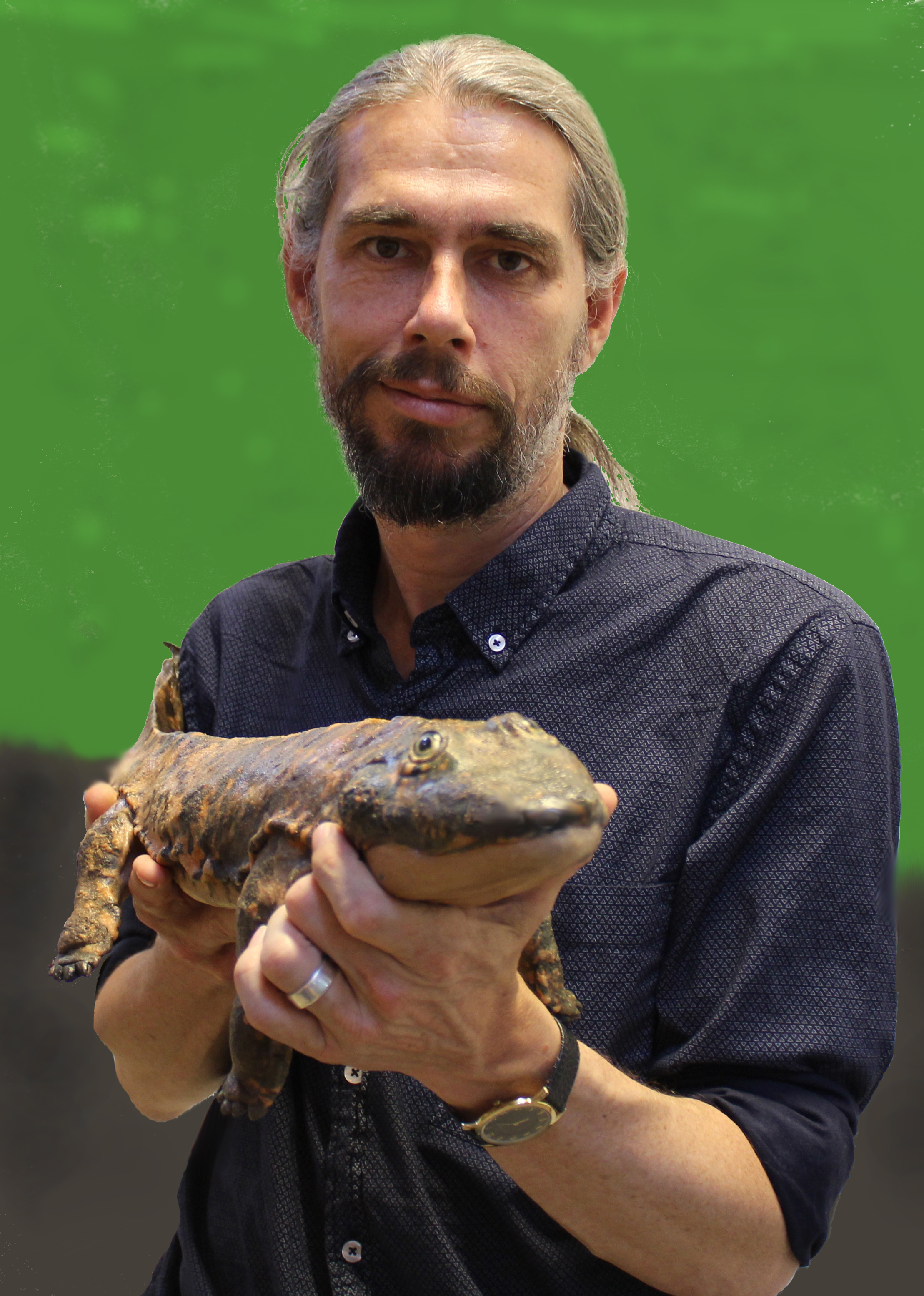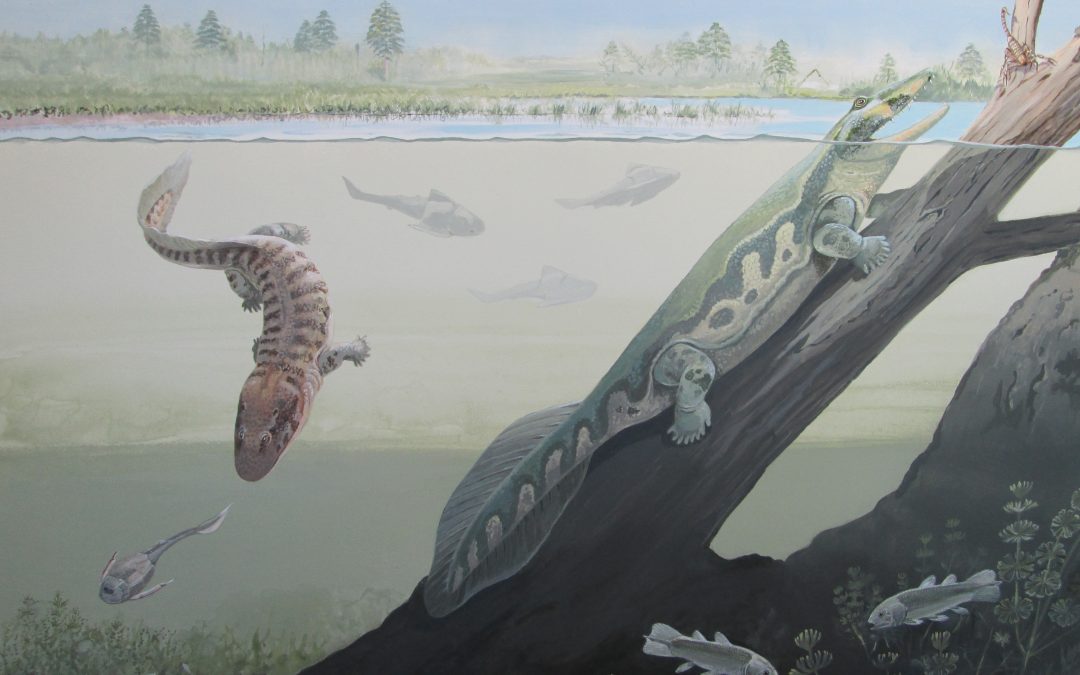First tetrapods of Africa lived within the Devonian Antarctic
The first African fossils of Devonian tetrapods (four-legged vertebrates) show these pioneers of land living within the Antarctic circle, 360 million years ago.
The evolution of tetrapods from fishes during the Devonian period was a key event in our distant ancestry. Remains of the earliest tetrapods are very rare with only 12 species previously having been described, only two of these from complete specimens. New-found fossils from the latest Devonian Waterloo Farm locality near Grahamstown force a major reassessment of this event. Whereas all previously found Devonian tetrapods came from localities which were in tropical regions during the Devonian, these specimens lived within the Antarctic circle. The new specimens were discovered by Dr Robert Gess of the Albany Museum and described in June 2018 in Science by him and Per Ahlberg of Uppsala University in Sweden.

Dr Robert Gess with tetrapod
The first African Devonian tetrapods
The two new species, named Tutusius and Umzantsia, are Africa’s earliest known four-legged vertebrates by a remarkable 70 million years. The approximately metre-long Tutusius umlambo (named in honour of Archbishop Emeritus Desmond Tutu) and the somewhat smaller Umzantsia amazana are both incomplete. Tutusius is represented by a single bone from the shoulder girdle, whereas Umzantsia is known from a greater number of bones, but they both appear similar to previously known Devonian tetrapods. Alive, they would have resembled a cross between a crocodile and a fish, with a crocodile-like head, stubby legs, and a tail with a fish-like fin. They lived in a coastal estuarine lake with mixed fresh water and marine influences. The fauna and flora preserved at Waterloo Farm comprise the most comprehensive record of life in and around a latest Devonian estuary known in the world.

Infographic of evolution of the shoulder girdle across the fish to tetrapod transition. Includes the proposed position of the cleithra of Tutusius and Umzantsia
The first tetrapod found outside of tropical regions
The real importance of Tutusius and Umzantsia lies in where they were found.
Devonian tetrapod fossils are found in widely scattered localities. However, if the continents are mapped back to their Devonian positions, it emerges that all previous finds are from rocks deposited in the palaeotropics – between 30 degrees north and south of the equator. Almost all come from Laurussia, a supercontinent that later fragmented into North America, Greenland and Europe.
The much larger southern supercontinent, Gondwana, which incorporated present-day Africa, South America, Australia, Antarctica, and India, has hitherto yielded almost no Devonian tetrapods, with only an isolated jaw (named Metaxygnathus) and footprints, being found in eastern Australia. Because Australia was the northernmost part of Gondwana, extending into the tropics, an assumption developed that tetrapods evolved in the tropics, most likely in Laurussia. By extension it was assumed that movement of vertebrates from water onto land (terrestrialisation) also occurred in the tropics. Attempts to understand the causes of these major macroevolutionary steps therefore focussed on conditions prevalent in tropical water bodies.
The Waterloo Farm tetrapods not only come from Gondwana, but from its southernmost part: reconstructed to have been more than 70 degrees south, within the Antarctic circle. Abundant plant fossils show that forests grew nearby, so it wasn’t frozen, but it was definitely not tropical and during winter it will have experienced months of complete darkness. This finding changes our understanding of the distribution of Devonian tetrapods. We now know that tetrapods occurred throughout the world by the Late Devonian and that their evolution and terrestrialisation could realistically have occurred anywhere.

Silhouettes of Devonian tetrapods showing (in green) the life positions of tetrapod bones recovered from Waterloo Farm
Future work
Umzantsia retains primitive features not known in any other described tetrapod. Discovery of more complete material of this species, from the Waterloo Farm shales, could therefore potentially provide an example of a species representing an as yet unknown step in the development of our own lineage. Somewhat less likely, but not impossible, is that the Waterloo Farm shales could provide unique examples of preserved soft tissue structures of tetrapods as it has previously yielded fish remains preserving soft tissue. It is the only known site in the world with both tetrapod remains and soft tissue preservation.

